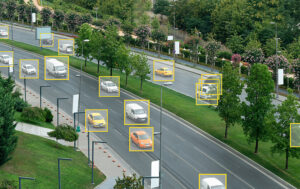
Chee How Lim worked as an aerospace engineer in Malaysia. He wanted to start a business that would really take off. Today, his company, Tapway, is riding a wave of people using computer vision and AI in Southeast Asia.
The Kuala Lumpur company’s biggest project to date was made possible by a request for help with video analytics in 2019.
PLUS, which runs the most toll roads in Malaysia, wanted to make it easier for the more than 1.5 million people who use them every day to get around. As part of a national plan, cars, taxis, buses, and trucks were supposed to be able to move freely across multiple lanes. However, this posed a number of big problems.
Getting out of traffic jams
There are five different types of highway fees based on the type of vehicle. Drivers pay in four different ways, and they often use one way to get on the highway and a different way to get off. This makes it hard to keep track of vehicles.
People driving in the lanes for different types of vehicles had to stop, which slowed down traffic and let booth workers figure out what kind of vehicle it was. Even back then, some drivers took advantage of the system by swapping their cards on the highway to get lower tolls.
Lim said, “We showed them how you could solve all of that with just a camera and AI and computer vision.”
AI makes things easier
Using NVIDIA GPUs and software, Tapway trained and ran AI models that could read a car’s license plate and figure out its class, make, and color in just 50 milliseconds, or about one-tenth of an eye blink, even if the car was going up to 40 kilometers per hour and approaching a toll plaza.
Tapway’s VehicleTrack software works 97 percent of the time, no matter the light or weather. And NVIDIA Triton Inference Server makes it possible for a single GPU to handle up to 50 video streams at the same time.
PLUS has put in 577 cameras so far, and it plans to put in almost 900 more in 92 toll plazas to make sure traffic flows smoothly.
Inside a System for Computer Vision
Smart AI models are trained in the cloud on a network of NVIDIA A100 and V100 Tensor Core GPUs. This is how the system works.
Lim said that they use a dataset of up to 100,000 images to make a new model for a Tapway customer in a few hours. This is a huge improvement over a CPU-based system that used to take several days.
But the real magic happens when the models are used in production to process up to 28,800 images per minute on edge servers with NVIDIA A10, A30, and T4 GPUs. This is called inference.
It sings because of software
Tapway builds its computer vision apps with the NVIDIA DeepStream software development kit. NVIDIA TensorRT keeps its AI models slim and fast, and Triton acts as a traffic cop, directing AI inference jobs.
Lim said, “Triton has really saved our lives.” “When we did inference and multithreading on our own, we ran into scaling problems and couldn’t handle more than 12 video streams in a server. With Triton, we can easily handle 20, and we’ve tested it with up to 50 streams at the same time,” he said.
Tapway became an NVIDIA Metropolis partner for real in February. The program gives companies that do intelligent video analytics early access to technology and knowledge.
“We had to pass stress tests in areas like multistreaming and security, which helped us improve our products. From a business point of view, it’s a way to be known as an AI expert in the region and build on that reputation,” Lim said.
Since it started in 2014, Tapway has put 3,000 sensors in 500 places in Malaysia and Singapore. Off the road, they help malls and stores figure out how customers shop. Now, the company is getting ready to help manufacturers like carmakers and palm oil producers check the quality of their products.
“Demand has never been higher, there are a lot of vision challenges in the world, and there are quite a few exciting projects we hope to land soon,” he said.
